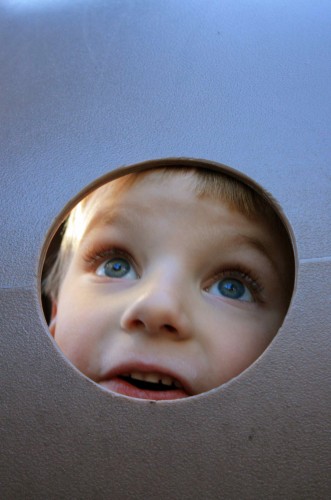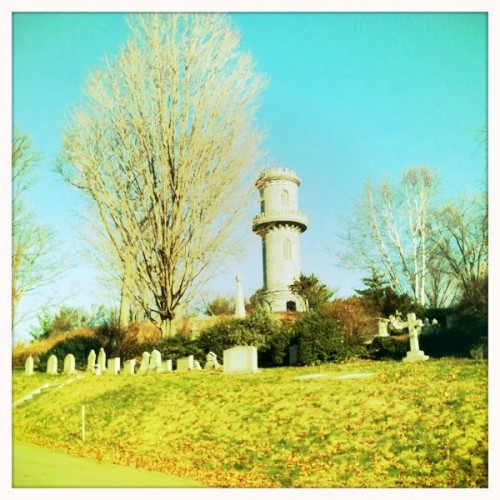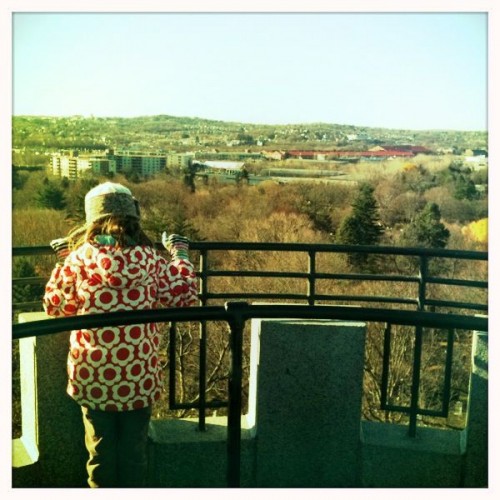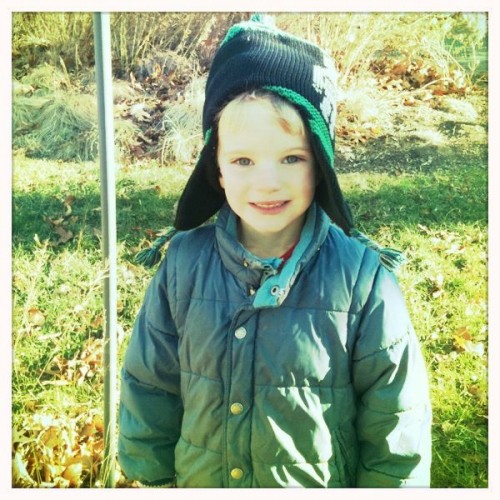This is the darkest season; we wake in darkness and we watch the sun wane again before the clock has hit 5:00. The light in the middle of the day is often pitched, somehow, at a high, wavering note; it is full and thin at the same time, endings tangible within it. Somehow, the dark bothers me less than it used to. There is an internal light that helps keep the thick, sometimes-threatening darkness slightly at bay.
The optimist in me feels a wild surge of hope about this: perhaps I am witnessing the birth of my own faith. This is a holy month, after all, full of imagery of light, regardless of your religion. Perhaps it is the flickering, nascent light of my own belief that illuminates these dark days. The candles in windows and the holiday lights strung on trees and in windows everywhere I look both reflect and contribute to that internal flickering.
We move towards the solstice, every day closer. The winter solstice may well be the single holiest day of the year for me. I definitely prefer it to the summer one, which demonstrates as clearly as any detail about me how much the promise of something (good and bad) impacts me. Even at the height of summer, with the longest days we’ll ever know, there is something gloomy to me about the solstice. It represents the turning back to dark. That’s the preemptive regret that I’ve written about, which can completely occlude any present radiance for me. This solstice, two weeks away, is the opposite. It promises a turning back towards the light.
A year ago I read some of Meg Casey’s thoughts on the holiness that exists in darkness. They moved me so much then, and continue to, that I want to post them again. Once in a great while I read a piece of writing that makes me want to kneel and press my head to the ground, saluting its gorgeousness and ability to evoke emotion. This is one such piece. Please read it.
December is a holy month. Maybe it is the dark silky silence that descends so early, that speaks to me of reverence. Maybe it is the promise that December holds–that no matter how dark, how cold, how empty it can get, the light is coming back. Something always shifts in me when December arrives–I embrace the darkness and am eager for the coming solstice when the whole world is still and holds its breath, waiting to be reborn again. December whispers to me of midnight mass, of ancient choirs, of stained glass windows turned into gems by candle light.
Meg then goes on to talk about the connection between holiness and wholeness, using the image of a stained glass window: Broken, jagged, sharp pieces of glass held together magically, transformed into one perfect design not by gold or silver but by something as mundane as lead. And, of course, it is the light that animates the beauty. Meg’s post reminds me of one of my very favorite of Anne Lamott’s lines: “Love is sovereign.” Yes. As Meg says, Love is the transformative power that turns our brokenness into something beautiful.
I love this because I think we often think of light as exposing flaws, unearthing chinks, revealing ugliness. Yet in Meg’s metaphor it is light that knits disparate pieces into a whole, that reveals the light that exists within them. Love as light. Transformative, healing brokenness, uncovering worth. May we all strive to be this kind of light, even in the dark moments of our lives.
There are some themes in my writing of which I’m very conscious. Others emerge organically, and I’m not aware of them until I reflect for a moment. Light and darkness has been a message to which I’ve returned this year, over and over. I am often moved to tears by the quality of light in nature, and the metaphor of dark and light has also been one to which I am consistently drawn. Light and darkness. Holiness and grace. Radiance and shadow. We keep on turning, and the shadows keep dancing, the light flickering. All I can do is keep watching.

 #Reverb10, day 4 – Wonder. How did you cultivate a sense of wonder in your life this year?
#Reverb10, day 4 – Wonder. How did you cultivate a sense of wonder in your life this year?

 Sunday morning dawned clear and very cold. Winter has swept in in Thanksgiving’s wake. I took Grace and Whit to one of my favorite places,
Sunday morning dawned clear and very cold. Winter has swept in in Thanksgiving’s wake. I took Grace and Whit to one of my favorite places, 
